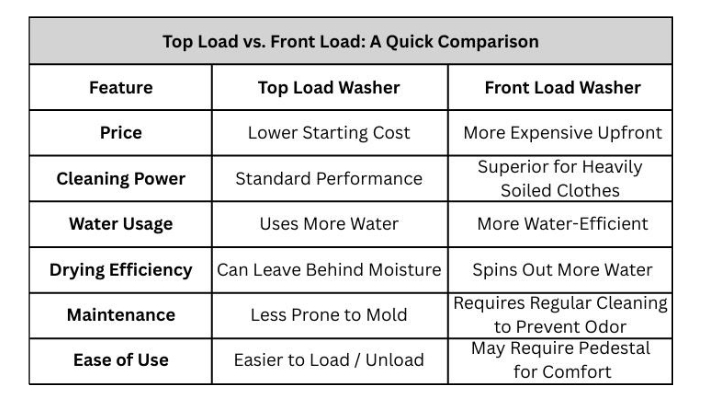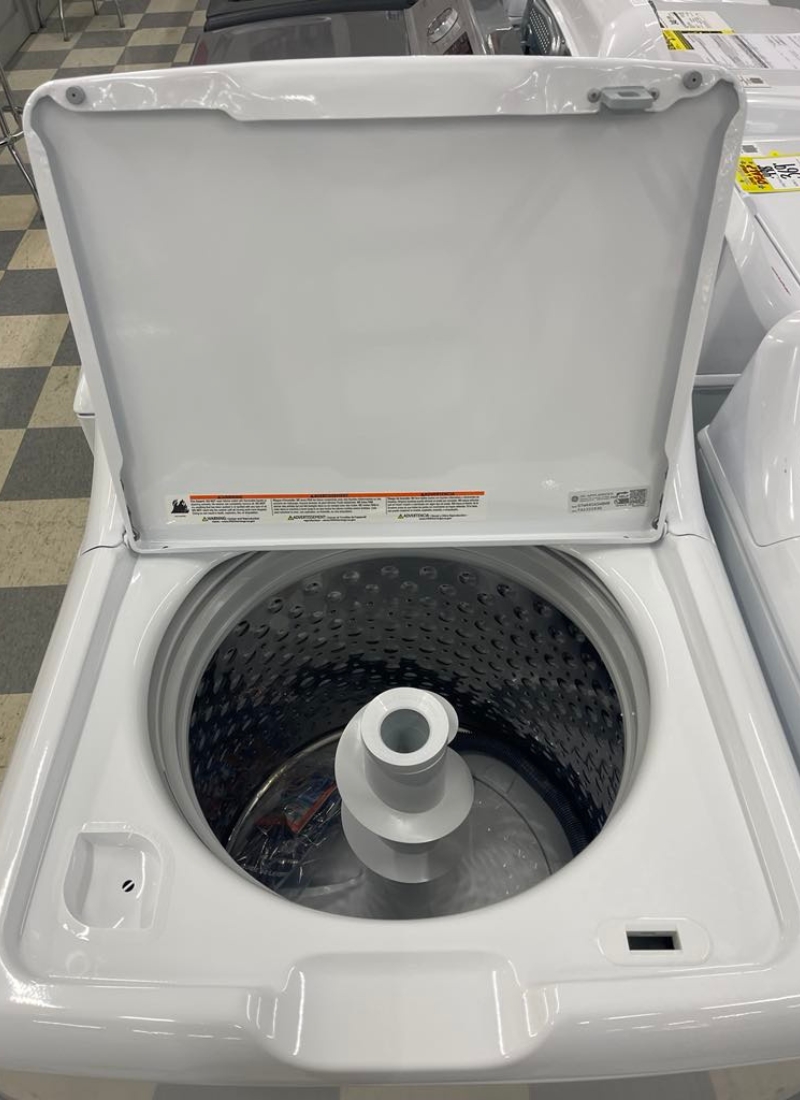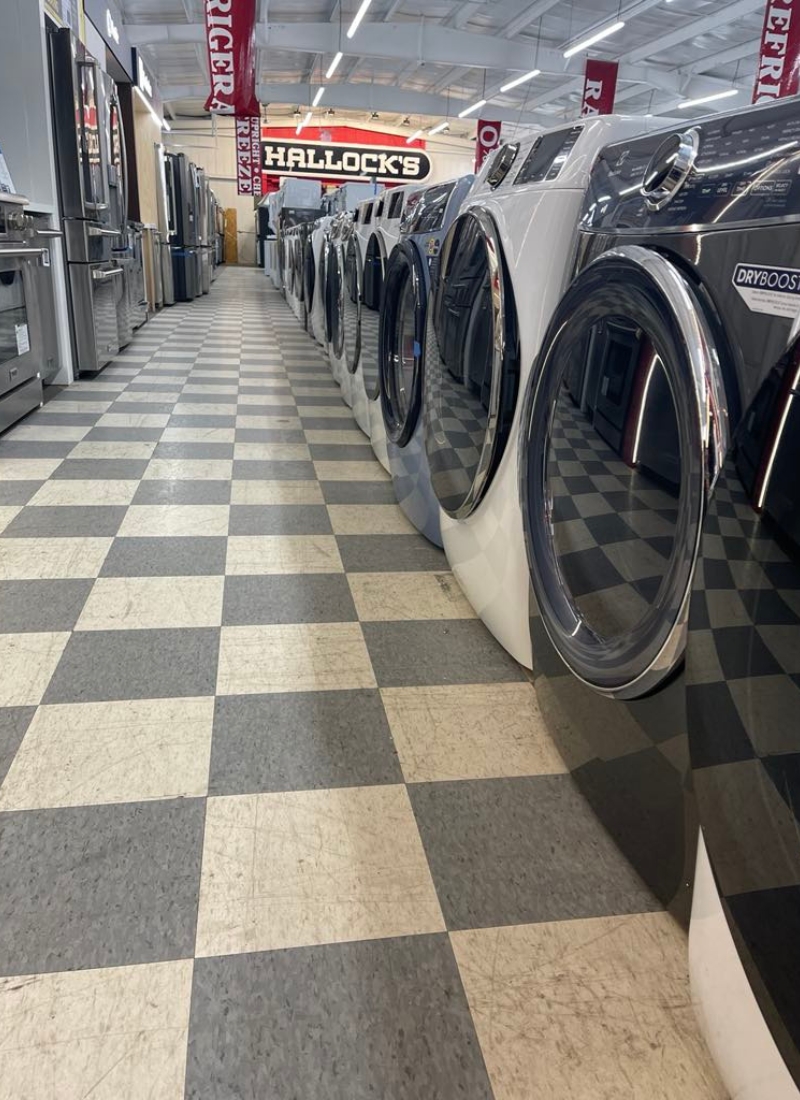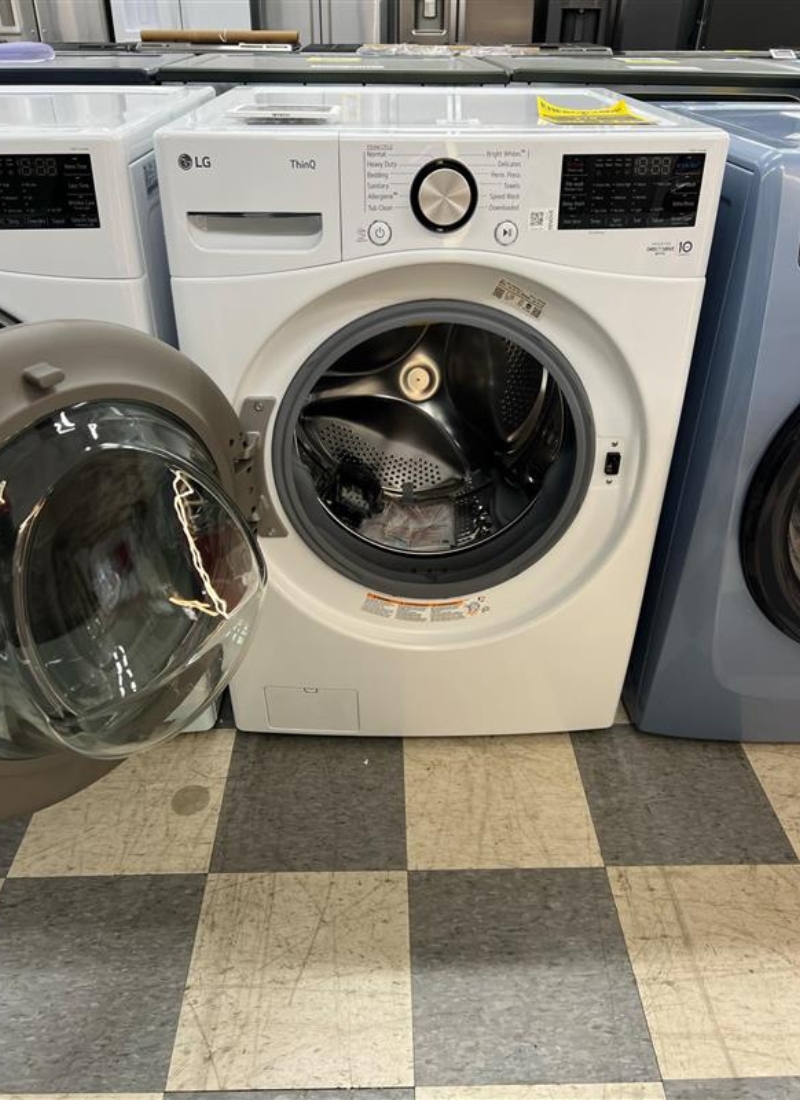When a customer tells me they are in the market for a washing machine, one of the first questions I ask is whether they are looking for a front-load or top-load washer. Often, they already know which style they prefer, making it easier for me to narrow down their options based on brand, features, and capacity.
However, some customers ask for my opinion on which style is better. In this blog, I’ll cover the benefits, drawbacks, and personal insights of each design to help you make an informed decision.

Top Load Washers: Benefits and Drawbacks
Advantages of Top Load Washers
- Ease of Loading: Top load washers don’t require as much bending, making them easier on the back, especially for people with mobility issues.
- Less Prone to Mold & Mildew: These washers are less likely to develop funky odors since they don’t trap moisture as easily as front loaders.
- Cost-Effective: Entry-level top loaders typically range from $460–$600, making them about $200 cheaper than their front-loading counterparts.
Drawbacks of Top Load Washers
- Cleaning Performance: While effective for most loads, top loaders may struggle with heavily soiled clothes. Their washing motion provides less scrubbing action compared to front loaders.
- Water Inefficiency: Despite improvements, top-load washers still use more water per cycle, making them less eco-friendly.
- Rough on Fabrics: Models with agitators can be rougher on delicate clothing, sometimes causing tangling or damage.
Front Load Washers: Benefits and Drawbacks
Advantages of Front Load Washers
- Superior Cleaning Performance: Front loaders clean better, especially for stained or heavily soiled clothes, thanks to their gravity-powered tumbling action.
- Water and Energy Efficiency: These washers use approximately 5 gallons less water per cycle compared to even the most efficient top loaders.
- Faster Drying Time: With higher spin speeds, front loaders remove more water, reducing dryer time and energy costs.
- Space-Saving Design: Front loaders can be stacked with a matching dryer, making them ideal for compact laundry rooms. Learn how to optimize your appliance placement with these space-saving solutions for smaller laundry rooms.
Drawbacks of Front Load Washers
- Mold and Mildew Issues: Moisture retention on the gasket can lead to mold or unpleasant odors. However, regular maintenance, such as leaving the door open and running a cleaning cycle, can minimize this problem. Here are some additional tips on how to clean your front loader washing machine and prevent washing machine odors (read this Good Housekeeping article for the tips!).
- More Bending Required: Loading and unloading front loaders can be less ergonomic without a pedestal. Looking to make your laundry space even more ergonomically friendly? Check out these top ten design tips to make your laundry room high-functioning as well as smart, stylish, and easy on your back.

Expert Recommendation: My Personal Take
When customers ask which washer I prefer, my answer is usually front load. Although top-load washers are convenient and familiar, front loaders offer:
- Better cleaning power
- Greater water and energy efficiency
- Faster drying times
In my personal experience, front loaders are gentler on clothing, and I’ve found that regular cleaning prevents odor buildup. Even in my apartment complex, where the washers are frequently used, I’ve never had an issue with mold or mildew.
Whether you're considering a front-load versus a top-load washing machine, or need guidance on maintenance, purchasing new appliances, or have general questions during the research process, I'm here to help!

Bill Bader
Sales, Hallock's Appliances
bbader@hallocks.com
174 Cedar Street
Branford, CT 06405 | 203.488.2527



